Public Buses In Tokyo, Perth And Kuala Lumpur
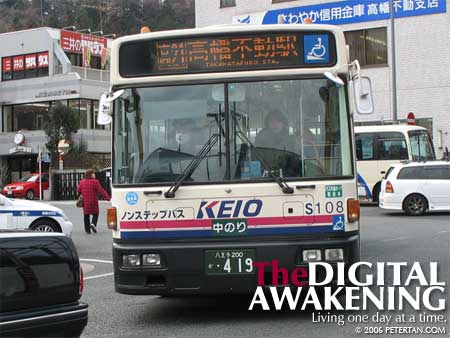
Travelling broadens the mind. It is an opportunity to see how things can be done differently and better. When I was in Tokyo for training earlier this year, it was not the culture shock that got to me. Rather, the barrier-free environment in public places was so amazing that I had difficulty adjusting when I came back although I was there only for two weeks. I had no problem moving about in Tokyo. Most of the buses had facilities to accommodate wheelchairs. The drivers were very helpful in assisting wheelchair users too.
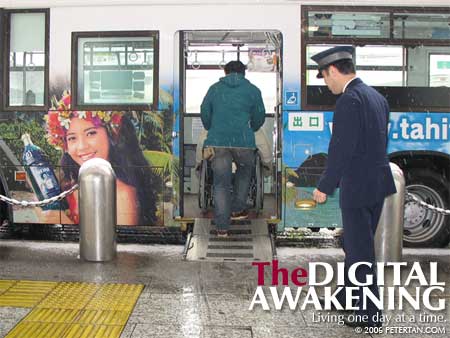
After reading the entry titled Please Take Along My Disability, Cynthia Foo of Just Blogging Around messaged me. She is currently studying in Perth and shared with me about the barrier-free environment there and how the Australians are generally considerate when it comes to assisting disabled persons. I asked if she could take some photos that I could use for this entry because I was going to write about accessible public transportation. The next day, she went out with Kian, her boyfriend, and caught some interesting shots and also a video (AVI Format, 8.28 MB – video removed to reduce bandwidth load. Please email me for a copy).
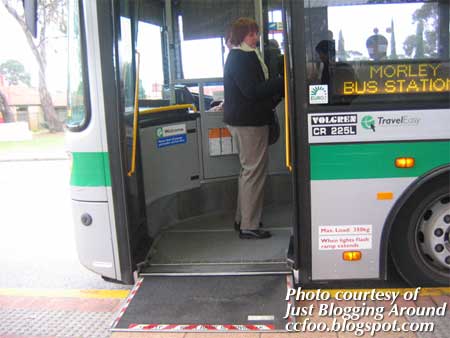
“I asked the bus driver,” Cynthia shared with me. “He is really friendly to show me everything. I told him I’m helping a friend doing a blog. He doesn’t know what it is anyway but once he heard it is for people with disabilities he straight away said, “Oh!! I show you everything when I finish smoking.” He allowed me to take pictures before allowing people to go in.”
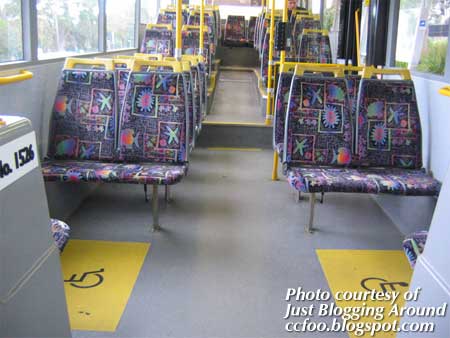
After going through the photos that Cynthia sent to me, I wondered about the state of the public transportation in Kuala Lumpur, especially buses. Wuan uses the RapidKL network of buses and the Ampang & Sri Petaling Line (formerly Star-LRT) to work everyday. I told her I wanted to see the difference between Tokyo, Perth and Kuala Lumpur.
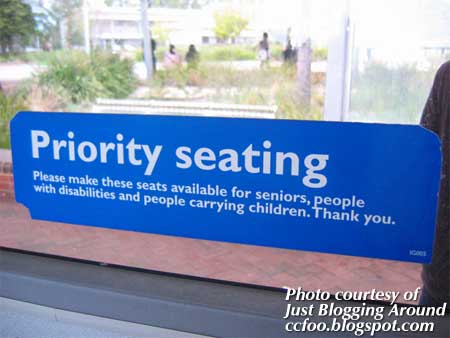
She took a load of photos for me. Of the few hundred RapidKL buses plying the road, none were accessible to wheelchairs. It is unfortunate that even the newly delivered buses do not come with features such as ramps and low floors. The Ampang & Sri Petaling Line is even worse. There are no elevators to the platforms. I wonder how the elderly and the pregnant can manage up the numerous flights of steps by themselves.
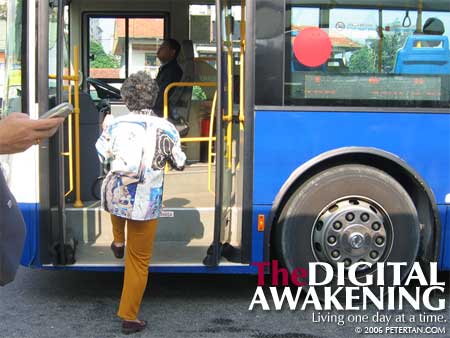
As it is, Malaysia cannot claim to be a fully inclusive society yet. The interests and needs of a sizeable group of citizens have not been fully addressed. To be fair, the government is currently looking into ways to resolve this problem. I attended an informal meeting with representatives from two governmental ministries and several disabled persons last week. They were very keen in making the public environment barrier-free. The effectiveness of this initiative is yet to be seen but for the sake of people who need it, I hope it is followed through to completion.
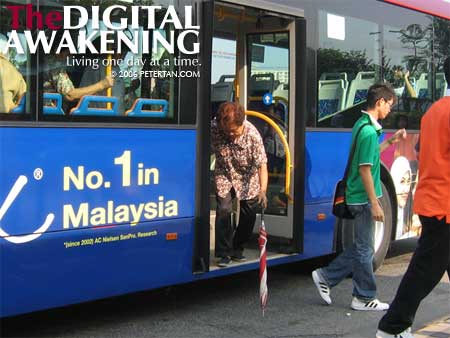
One of the reasons why Tokyo is so accessible is because of the ageing population there. Malaysia, too, is facing a growing trend of ageing population. A barrier-free environment will benefit the elderly in many ways. They have contributed much to the development of the nation. We must at least ensure that their most basic needs are provided for, among others the ability to move around conveniently.
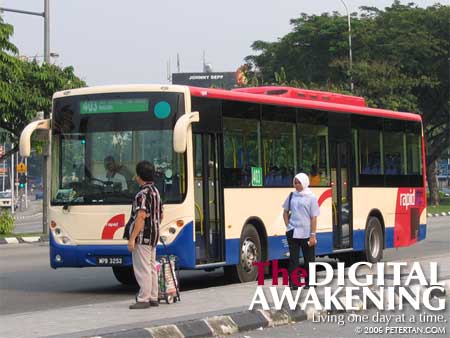
In fact, the inclusion of barrier-free facilities does not deprive anyone of anything. Everybody can use it. It truly baffles me that this standard of universal accessibility is not being practiced widely in this country. What are we waiting for? And finally, how do the public buses in Kuala Lumpur score when it comes to accessibility? We failed wholly and entirely. None could accommodate a person on a wheelchair. As a world class city, Kuala Lumpur has a lot of catching up to do as compared to cities that have laid claim to less.
